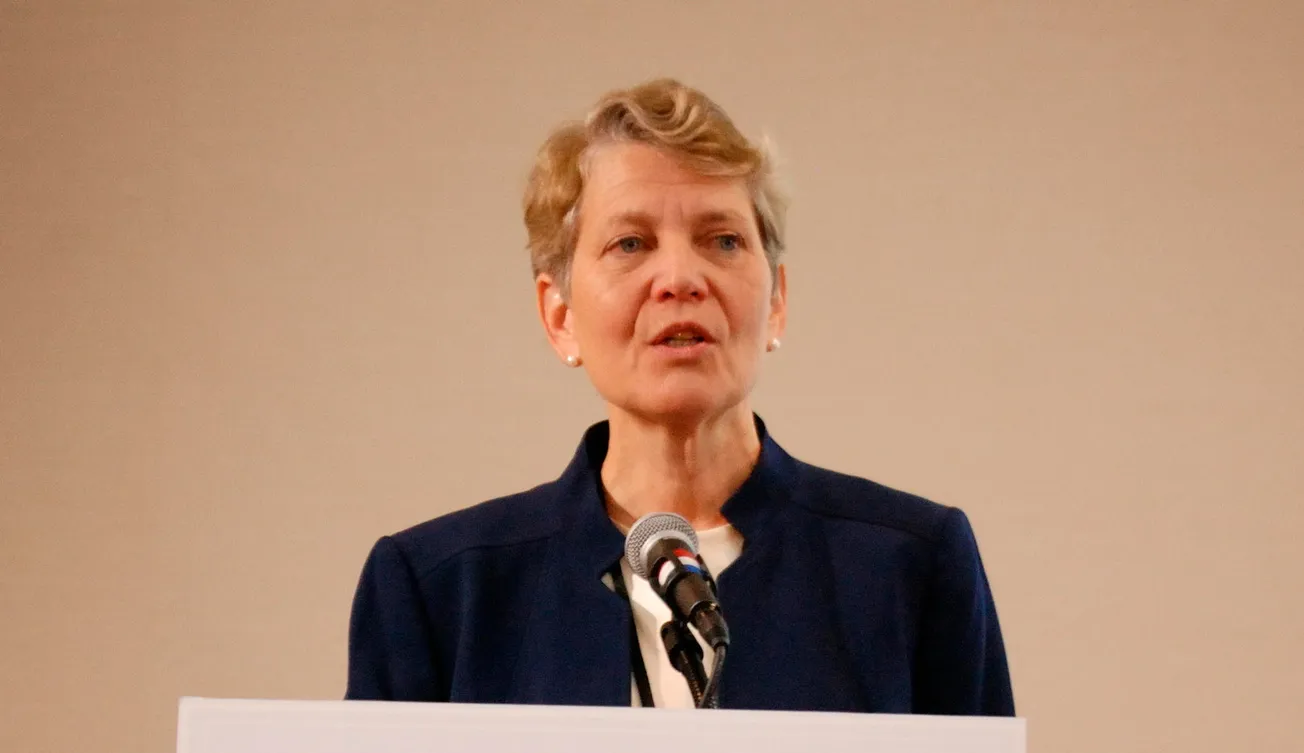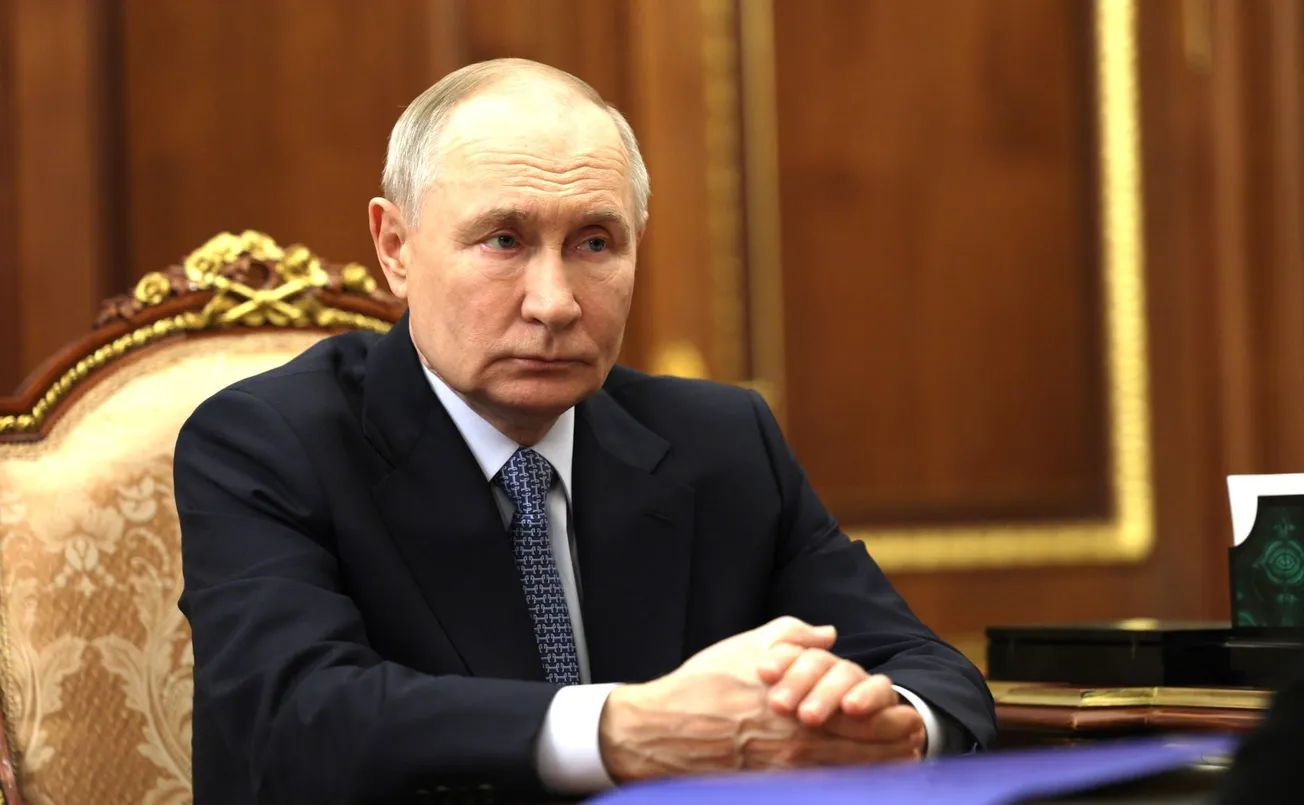The following is the keynote address delivered by Schiller Institute founder Helga Zepp-LaRouche to the Schiller Institute’s international conference” “The Oasis Plan: The LaRouche Solution for Peace Through Development Between Israel and Palestine and for All of Southwest Asia.
HELGA ZEPP-LAROUCHE: Hello. Greetings to all of you from many different countries, from wherever you may be listening now. We are organizing this Oasis Conference to inject a perspective of hope and show a way out of an otherwise desperate, extremely dangerous, and indeed, catastrophic situation in Southwest Asia.
If we don’t replace this present escalation, which could rapidly turn into a full-fledged regional war, turning into a global nuclear war, it could mean the end of the human species on this planet. In order to avoid that short-term danger, what is needed is a cognitive jump, to conceptualize an entirely different approach, namely to define the economic and security self-interest of the Palestinians, the Arabs in general, as well as the Israelis, and then the neighboring countries in the larger region.
Why am I saying this?
What has happened in the last six months is unprecedented in all of history. A genocide, which is happening in real time, is transmitted live from the battlefield in Gaza to the TV sets in the living rooms of the world audience. So while in the first instance after the Hamas attack October 7th on Israeli villages causing 1200 deaths, the sympathy of much of the world was with Israel. That changed day by day, week by week, month by month, as billions of people could watch with their own eyes, unfiltered by commentators and narrative-authors. And what they saw was not a measured counter reaction by a country under attack, but a relentless ethnic cleansing in a sealed tiny territory by one of the most highly technologically equipped military forces in the world, using artificial intelligence for targeting of Hamas fighters and at the same time denying water, food, medical care, electricity, housing, clothing, sanitation, etc. to an entirely unarmed population. So far, the casualties on the Palestinian side are around 33,400, of which 17,000 are children. That is, 44% of all killed are children! And more than 1 million are starving to death acutely. That is why there have been hundreds of thousands in the streets in Islamic countries, in American and European cities, and in the universities!
In the aftermath of the Israeli attack on the Iranian consulate in Damascus, US CENTCOM commander, Gen. Michael Kurilla, is presently visiting Israel where he met with IDF Chief of Staff Herzi Halevi, and Defense Minister Gallant, and visited the Air Force Command Center, as well as the air bases. Western media is buzzing about a possible Iranian strike on a variety of targets in Israel as early as today or two days from now. This morning, the Netherlands closed its embassy in Tehran, Lufthansa cancelled flights to Iran until next Thursday and the Foreign Office of Germany has called for all German citizens to leave the country. It’s clearly a hair trigger situation, which in the worst case could turn into regional and even global war.
Despite this escalation, and all the more because of it, it is therefore of the utmost urgency that a completely different approach is being introduced, namely the so-called Oasis Plan, which was proposed in 1975 by my late husband, Lyndon LaRouche. It is based on the idea to create an incentive for both the Palestinians and the Israelis, to replace the present feelings of deep injury, pain and despair for some and hatred for others, with a perspective of a common economic development for the creation of a better future for all generations to come. For the Palestinians it is of vital importance for their very existence, and for the Israelis they should listen to those who are warning them about the change in the perception of the world, such as Ami Ayalon, the former director of the Shin Bet during the time of the Oslo Accords. In an article in the current issue of Foreign Affairs, he warns Israel, that following the IDF attack on food trucks on February 29, killing 112 people, and wounding 760—who were desperately trying to obtain the food that could save them from starvation—and the attack on the seven World Central Kitchen workers, eradicated the legitimacy of the war in the eyes of the world; that it is seen no longer as a war in self-defense, but as an act of expansionist aggression. Furthermore, Ayalon writes that Israel can not win by eliminating the Hamas leadership, since that would not make the Hamas ideology disappear.
That is an understatement of the year. Even if this present crisis would not lead to a global annihilation of the entire human species in which obviously also Israel would vanish, if the cycle of violence is not interrupted once and for all, the future for all will be a hell, in which one war will follow the next, as we have seen during the last 75 years, always naturally feeding the various arms producers of the growing military industrial complexes.
What we propose therefore is the updated version of the Oasis Plan first introduced by Lyndon LaRouche in 1975, which he proposed after attending a celebration of the Ba’ath party in Iraq, attended by many leaders of the Non-Aligned Movement. For anyone visiting Southwest Asia, the most striking experience is the overwhelming presence of the desert and the obvious shortage of water, especially fresh water. It is also clear that the requirements for the water consumption for any population, Israeli or Arab, for a modern living standard, cannot be satisfied from the existing “natural” water resources. Furthermore, in all the military conflicts so far, the lack of water and the efforts to control the access to water have played a decisive role.
The existing aquifers in the region do not provide even approximately sufficient water, therefore even a fair sharing agreement would not solve the problem. In order to create large amounts of new fresh water a variety of methods must be deployed. The most obvious to begin with are several canals connecting the Mediterranean with the Dead Sea and the Dead Sea with the Red Sea. Because of the difference in altitude, the Dead Sea is about 400 meters below the Mediterranean, so this allows for hydropower generation. But if one creates an additional canal from the Gulf of Aqaba to the Dead Sea, and then links the two canals by a cross canal, something else is possible. The basic idea is to increase the size of the canals sufficiently to allow for large-scale desalination projects along the banks of the canals with the aid of a number of nuclear power plants. Because of the breakthroughs in technology in the recent decades, the availability of the fourth generation pebble-bed reactor, the high-temperature reactor, that was originally developed by Professor Schulten in Jülich, Germany, and which is produced now by China, the safety concerns have been solved. There is also the option of using thorium-cycle reactors, which are uniquely usable for civilian consumption of nuclear energy. One could build a significant number of 300-megawatt electricity plants, what used to be called “nuplexes” or “duplexes” along the canals, providing fresh water for large-scale irrigation for reforestation, agriculture, the building of transport infrastructure and new cities.
Even if the cost of producing fresh water from desalination of saltwater with nuclear energy is relatively high, the economic benefit from the enormous economic activity generated this way in areas, where there was absolutely none before, is orders of magnitude larger than the amount originally spent. It is the unique power of human labor, that with the help of science and technology, it adds value to the process, so that the outcome of work is always higher in terms of value than all the elements which went into it. The energy-flux density used in this, determines the ratio of added value. So it really pays for itself.
One should therefore not only look at the projects mentioned here so far, but have the vision of how this region can look in one, two, three, four generations from now. Take as an example China, which has in the last 30 years greened several desert areas successfully. The Chinese economist Dr. Ding Yifan describes in his new book The New Dynamics of Development, how nearly one-third of the Hobq Desert in Inner Mongolia has been effectively treated, and has become an economic cluster of desert tourism, food, and photovoltaics, and how in the Sekhangba not far from Beijing, thousands of hectares of forest have been restored, and how on the border between Shaanxi and Inner Mongolia in the Mawusu Desert, 30% of the desert is now covered with vegetation, soil erosion has ceased, and the newly reclaimed farmland has reached 1.6 million acres, generating tremendous economic benefit for local farmers. Dr. Ding Yifan reports that Eric Solheim, UN Undersecretary and UNEP Executive Director, praised the Hobq Desert model which provides excellent experience for other countries and regions that face desertification problems, and that China’s experience in sand control can also spread to Africa, the Middle East, and Latin America.
In order to conceptualize a vision of development for the entire region: from India to the Mediterranean, from the Caucasus to the Persian Gulf and the Red Sea, and how that area can develop as a future hub between Asia, Africa, and Europe, one should imagine the infrastructure density, for example, of Germany; where you have an integrated system of highways, railway, water systems, which represent the precondition for advanced industrial development and agriculture. There is no objective reason why Southwest Asia cannot achieve a comparable level in the future.
If the looming war can be avoided, the tectonic change which is taking place in the world today where the countries of the Global South are already working to create a new economic system, can create the conditions for the full development of Southwest Asia. Russia, China, India, Iran, the United Emirates, and Egypt are already members of the BRICS; Saudi Arabia is a candidate, and others like Turkey have indicated an intent to join. If all these countries would agree to the development perspective of the Oasis Plan and convene a comprehensive Southwest Asia conference on an emergency basis in the tradition of the Peace of Westphalia, the present looming catastrophe can be avoided, and the crisis turned into the beginning of a new era of peace and development.
Henry Kissinger, who pretended to be an expert on the Westphalian Order, actually grossly misunderstood it by insisting, that it required a “balancing power”—namely an unipolar policeman. He claimed that “the Westphalian system never applied fully to the Middle East,” since only Turkey, Egypt, and Iran had an historical basis, while the borders of the other states would reflect the arbitrariness of the victors of World War I., obviously referring to the intent for future manipulation of the Sykes-Picot Treaty.
That is why the world must return to the actual Peace of Westphalia and establish a new international security and development architecture, which takes into account the interest of every single country on the planet. That new architecture must emphatically include Russia, China, the US, as well as a two-state solution for Israel and Palestine.
According to the Cost of War Project of the Watson Institute at Brown University in Rhode Island, in the 20 years from 9/11 in 2001 until 2021, the US military expenditures including collateral costs were $8 trillion, which was spent for military and counter-terrorism measures in 85 countries, not including US special operations forces, CIA operations, “military information support operations,” “psychological operations,” etc. In this same period, more than 940,000 people have been killed by direct war violence in Iraq, Afghanistan, Syria, Yemen, and Pakistan; and the number of civilians who have died as a result of indirect causes, is significantly higher. If that amount of money—$8 trillion—would have been invested in programs to overcome poverty and underdevelopment, the world would be today a prosperous garden, and the United States would be celebrated as a friend of humanity.
I can already hear the critics who say that this perspective of an Oasis plan as the starting point for a new international security and development architecture in the spirit of the encyclical Populorum Progessio of Pope Paul VI is not realistic, or even worse, completely utopian.
When Friedrich Schiller wrote his trilogy “Wallenstein” about the powerful warlord of the 30 Years’ War, he portrayed Wallenstein, not in the way the handed down historic interpretation characterized him, but as a man who really wanted to end the war and reach peace. In the play, Schiller puts the vision of the Peace of Westphalia, which was reached 16 years later, in the mouth of Max Piccolomini, the fiancé of Wallenstein’s daughter Thekla. In a conversation with his father and a representative of the Vienna Court, Questenberg, Max says:
You make him [Wallenstein] an indignant man and, God knows!
To what even more, because he spares the Saxons,
Seeks to inspire confidence in the enemy
Which is the only way to peace;
For if war does not end in war,
Where then shall peace come from?
That is the whole idea: For if war does not end in war, where then shall peace come from? To inspire confidence in the enemy, that is the only way to peace! At the abyss of what could become the end of all life on the planet, are we, mankind, the creative species; and can we define a solution out of this danger? So let us put the Oasis Plan on the table of all governments of the world! Thank you.






